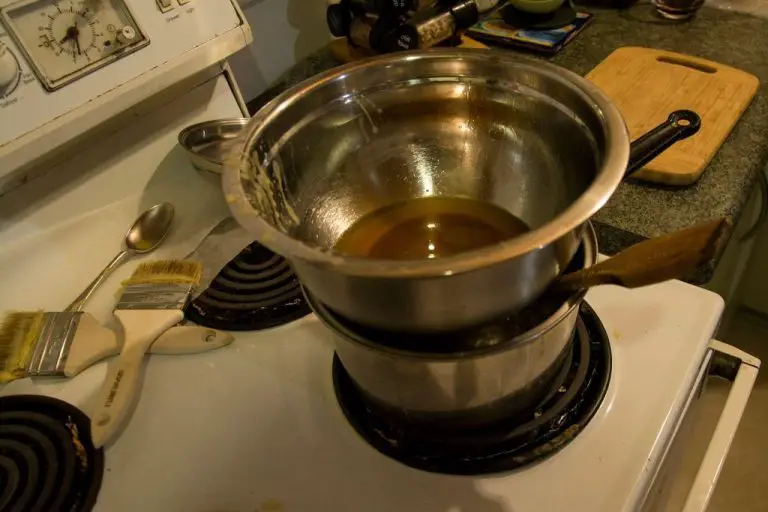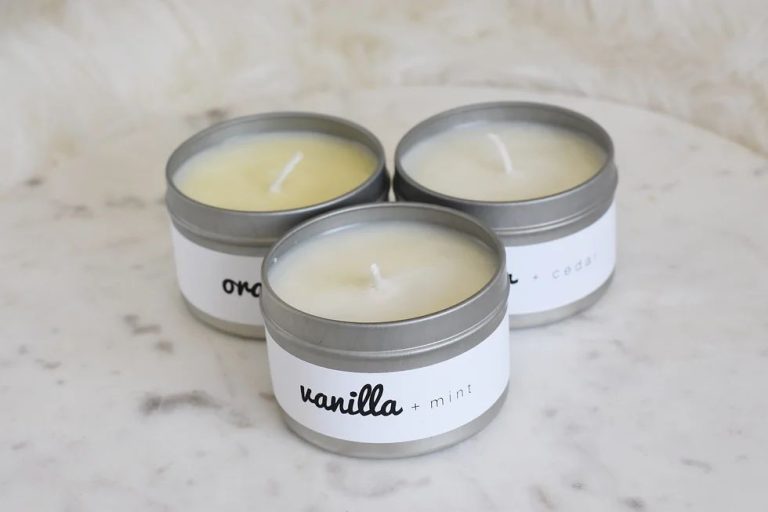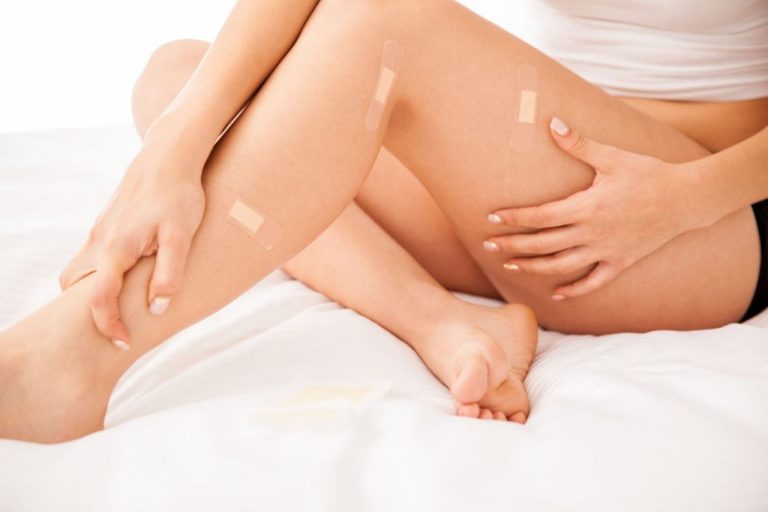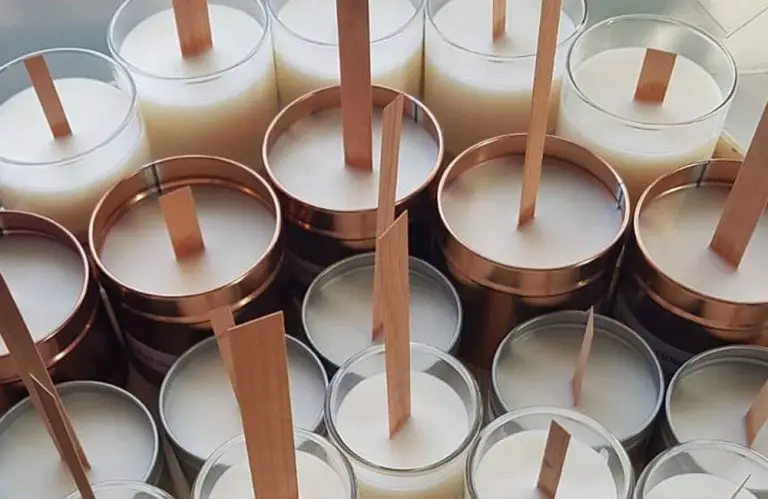Does Beeswax Completely Melt?
Beeswax is a natural wax produced by honey bees of the genus Apis. As defined by Merriam-Webster, beeswax refers to “a substance that is secreted by honeybees and is used by them for constructing the honeycomb.”
Beeswax consists of a complex mixture of over 300 chemical compounds, with the main components being palmitate, palmitoleate, and oleate esters of long-chain (30-32 carbons) aliphatic alcohols, with the ratio of triacontanyl palmitate CH3(CH2)29O-CO-(CH2)14CH3 to cerotic acid CH3(CH2)24COOH between 6:1 and 3:1. It has a relatively low melting point range of 62 to 64 °C (144 to 147 °F).
Chemical Composition
Beeswax contains a mixture of compounds that contribute to its properties. The main chemical components are:
- Palmitic acid – This fatty acid has a high melting point of 63°C. It makes up about 15% of beeswax.
- Cerotic acid – Another fatty acid that has a very high melting point around 88°C. It comprises 50-70% of beeswax.
- Myricyl palmitate – An ester made up of palmitic acid and myricyl alcohol. It has a melting point around 64-66°C and makes up about 14% of beeswax.
The high concentration of fatty acids like palmitic and cerotic acid contribute to the relatively high melting point of beeswax compared to other waxes. The exact chemical composition can vary based on the bees’ diet and age which influences melting behavior.
Melting Point Range
The melting point range of beeswax is typically between 62°C to 64°C (144°F to 147°F). This is the temperature range at which beeswax transitions from a solid to a liquid state (MillCreekHoney).
There are a few factors that can affect the exact melting point of beeswax:
- Chemical composition – Beeswax consists of different compounds like fatty acids, esters, and hydrocarbons. The ratios of these compounds can vary slightly and affect the melting point.
- Age – Older beeswax may have a slightly lower melting point than fresher beeswax.
- Impurities – Contaminants in the beeswax can potentially lower the melting point.
- Atmospheric pressure – Increased pressure results in a higher melting point for beeswax.
So while pure beeswax melts between 62°C to 64°C, the actual melting point can range from 61°C to 65°C depending on the above factors. The melting point is important to understand when working with beeswax in projects and products.
Heating Methods
The method used to heat beeswax can impact how quickly and evenly it melts. There are a few common options for melting beeswax:
On the stove: Beeswax can be melted in a double boiler on the stove. This allows for direct heat while preventing the wax from getting too hot. However, the wax needs to be stirred frequently to melt evenly. According to WikiHow, beeswax should never be melted over an open flame as it can reach combustible temperatures and result in a fire.[1]
In the microwave: A microwave can be used to melt beeswax quickly by heating in short intervals of about 30 seconds. However, microwaves tend to create hot spots, so the wax must be carefully stirred in between intervals to melt evenly.[2]
In the oven: An oven set to a low temperature (150-170°F) can slowly melt beeswax without overheating. The wax must be placed in a heat-safe container and stirred periodically for even melting.[3]
Double boiler: A double boiler uses steam from heated water to gently melt the beeswax. This prevents burning and evenly distributes heat. However, melting takes longer compared to other methods.[1]
In summary, indirect heating methods like a double boiler are safest, but direct heat works faster if temperatures are monitored. Stirring frequently is key for even melting no matter what heating method is used.
[1] https://www.wikihow.com/Melt-Beeswax
[2] https://www.betterbee.com/instructions-and-resources/beeswax-candles-and-character-molds.asp
[3] https://www.thesprucecrafts.com/how-to-melt-beeswax-5086369
Maintaining Shape
One of the unique properties of beeswax is its ability to soften and change shape when heated, without completely losing its original form. Beeswax has a plasticity that allows it to be molded and shaped, while still retaining some rigidity when warm. This makes it popular for projects like candle making, modeling, and wax crafts.
The key factor is that beeswax does not become a completely liquid state when heated. Its melting point range is between 144°F-147°F (62°C-64°C). At these warm temperatures, the beeswax softens into a pliable, clay-like material that can be shaped or molded as desired. However, the wax does not turn into a flowing liquid, so original shapes are generally retained if the wax is handled carefully when warm.
This unique physical property allows crafters to create shaped and sculpted candles, reuse old candle wax, and fashion beeswax objects that hold their form even when warmed. As long as the beeswax is not overheated past its melting point, the original molded shape will remain fairly stable. This plasticity and ability to retain shape makes beeswax a versatile material for creators and DIY enthusiasts.
Melting for Projects
Beeswax is a popular material for DIY projects and craft making. When working with beeswax for candle making, lip balm, lotion bars, or other creative uses, it’s important to know the best ways to fully melt the beeswax. Here are some tips:
Use a double boiler or makeshift double boiler. This indirect heating method gently melts the beeswax without burning or scorching it. Fill a saucepan with a couple inches of water and bring it to a simmer. Place your beeswax in a heat-safe glass or metal bowl or container and set it on top of the saucepan, not touching the water. The steam will slowly melt the beeswax.
Heat it slowly. Be patient and allow the beeswax to melt gradually. Don’t rush it by applying too much heat at once. Low and slow is best for full melting without damage.
Stir frequently. As the beeswax melts, stir it occasionally to distribute the heat evenly and prevent the bottom from overheating.
Maintain proper temperature. Ideal melting temperature for beeswax is about 145°F to 160°F. Higher temperatures can discolor or burn the wax. Use a thermometer to monitor the temperature.
Strain for purity. Once fully melted, pour the liquid beeswax through a mesh strainer lined with cheesecloth to filter out any impurities.
Allow to fully cool and harden before use. Fully melted and strained beeswax needs to completely reset to deliver the best results for craft projects. Simply follow your recipe once hardened again.
Temperature Regulation
Honey bees utilize various strategies to carefully regulate the internal temperature of their hive [Honeybee Colony Thermoregulation – Regulatory Mechanisms and Contribution of Individuals in Apis mellifera](https://www.ncbi.nlm.nih.gov/pmc/articles/PMC2813292/) . They maintain a temperature between 32-36°C (89-97°F) within the hive, which helps the beeswax used for comb construction remain intact and avoid melting [A Review on Thermoregulation Techniques in Honey Bees for Achieving Energy Efficiency in Smart Hives](https://futurecitiesandenvironment.com/articles/10.5334/fce.81). Bees control temperature by clustering together, sealing small air gaps, and regulating airflow. They will adjust the size of the winter clusters to generate and conserve heat. The thick beeswax combs also serve as insulation to prevent changes in temperature that could melt wax structures. By carefully regulating hive temperature, honey bees are able to ensure their wax combs do not completely melt and destabilize the hive structure. Stable comb temperatures allow the bees to store honey and pollen successfully.
Alternative Waxes
Other waxes with lower melt points can substitute for beeswax in some applications. Some common alternatives include:
Candelilla wax has a melt point of 68–73°C, making it a good substitute in products like balms and salves where beeswax is typically used. According to Formula Botanica, candelilla wax can replace beeswax in formulations, but it may alter texture and effectiveness.
Carnauba wax melts between 82–86°C. Per School of Natural Skincare, carnauba wax makes a good vegan substitute for products requiring a harder wax like lip balm sticks.
Rice bran wax has a melt point of 79–85°C. Glowing Orchid notes rice bran wax has good performance for products like lipstick and mascara since it is a softer wax.
While these waxes have lower melt points than beeswax, the differences can impact product effectiveness and texture. Careful testing is required when substituting alternate waxes in formulations calling for beeswax.
Safety Precautions
When melting beeswax, it’s important to take safety precautions to avoid burns or fires. According to Crystals Raw Honey, you should avoid using plastic or glass containers, as the melted wax can damage these materials. It’s best to use stainless steel, aluminum, or ceramic. You’ll also want to avoid exceeding the flash point, which is the lowest temperature at which the wax vapors will ignite. The flash point for beeswax is approximately 400-460°F.
Per the Weaver Leather safety data sheet, beeswax itself is non-toxic if ingested and generally non-irritating. However, you should take care not to ingest or inhale any wax vapors. Work in a well-ventilated area. It’s also wise to wear protective gloves when handling hot wax to avoid burns. Never leave melting wax unattended. Follow all manufacturer instructions for any melting devices. With proper precautions, you can safely melt beeswax for projects and products.
Conclusion
In summary, beeswax does completely melt when heated to its melting point range of 144-147°F (62-64°C). While the exact temperature needed depends on the purity and composition of the beeswax, most types become fully liquid between those temperatures. The best heating methods to melt beeswax are using double boilers, slow cookers, microwave ovens, or special wax melters which allow a precise temperature control. Maintaining beeswax shape is possible through stabilizers like vegetable oil or by avoiding overheating beyond the melting point range. Melting beeswax is useful for many projects from cosmetics to candles, but requires care to avoid burning and safety precautions. In conclusion, yes beeswax does completely melt with proper heating methods and temperature control.




